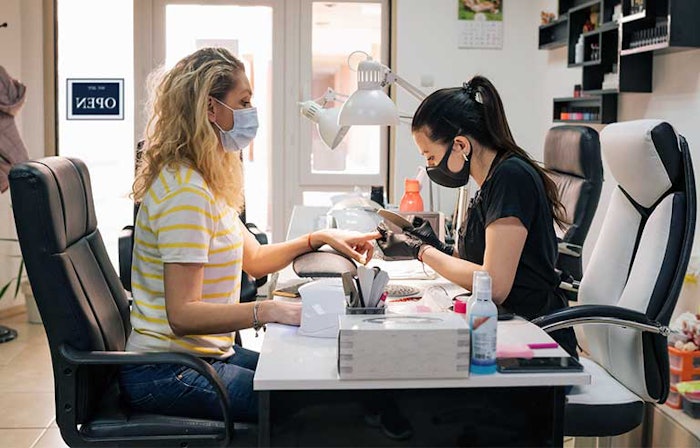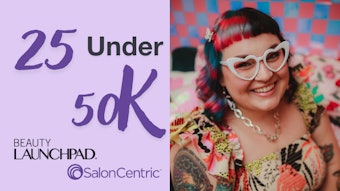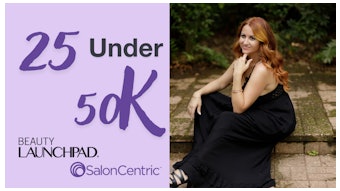
Our partners at the Centers for Disease Control and Prevention (CDC) share Information regarding safety in the salons!
NIC works closely with national infection control experts to utilize their expertise and guidance for the beauty professions. Since The Stylist News feature this month is “Adding Wellness to Your Salon, Spa or Barbershop, we thought it appropriate to share CDC health and safety guidance for our industries.
- Reduce exposure
Alter the workspace by making physical changes to prevent exposure to the virus that causes COVID-19
- Modify the alignment of workstations where feasible. For example, redesign workstations so stylists, cosmetologists, barbers and others are not facing each other and are separated by at least 6 feet.
- Move electronic payment terminals/credit card readers farther away from the cashier to increase the distance between the client and the cashier.
- Consider online payment systems to eliminate any contact.
- Establish, where possible, physical barriers between workers, and between workers and clients.
- Use strip curtains, plastic barriers, or similar materials to create impermeable dividers or partitions.
- When redesigning your workspace, consider using every other chair if moving chairs or adding barriers is impractical.
- Make sure the workspace is well ventilated.
- If the salon or barbershop has special ventilation, such as ventilated tables or portable ventilation units, they should be used.
- Discourage the use of personal fans and blow dryers as they have the potential to spread any airborne respiratory droplets that may contain the virus that causes COVID-19.
- Small business owners, renters and managers should work with facilities management to adjust the ventilation so that the maximum amount of fresh air is delivered to occupied spaces while maintaining the humidity at 40-60%.
- Generate clean-to-less-clean airflow by re-evaluating the positioning of supply and exhaust air diffusers and/or dampers. Place staff in “clean” zones relative to higher-risk areas such as visitor reception.
- Close or limit access to common areas where workers are likely to congregate and interact, such as break rooms, outside the entrance, and in entrance/exit areas.
- Remove or space appropriately the chairs in the waiting area and break rooms to promote social distancing.
- Discontinue self-serve, complimentary beverages.
- Use visual cues such as floor decals, colored tape, and signs to remind workers to maintain a distance of at least 6 feet from others, including at their workstation and in break areas.
- Consider these cues for clients as well, such as at the entrance and checkout line.
- Place handwashing stations or hand sanitizers with at least 60% alcohol in multiple locations throughout the workplace for workers and clients.
- Use touch-free stations where possible.
- Make sure restrooms are well stocked with soap and a way for people to dry hands.
- Change the way people work
- All workers should have a basic understanding of COVID-19, how the disease is thought to spread, what the symptoms of the disease are, and what measures can be taken to prevent or minimize the transmission of the virus that causes COVID-19.
- Training should include the importance of social distancing (maintaining a distance of at least 6 feet or more when possible), wearing masks appropriately, covering coughs and sneezes, washing hands frequently, cleaning and disinfecting high-touch surfaces, not sharing personal items or tools/equipment unless absolutely necessary, and not touching their face, mouth, nose, or eyes.
- When scheduling and confirming appointments, inform all clients to cancel and reschedule their appointment if they are not feeling well.
- Consider maintaining small groups of workers in teams (cohorting) to reduce the number of coworkers each person is exposed to.
- Consider staggering shifts so that empty workstations can be placed between active workstations.
- Clean and disinfect frequently touched surfaces.
- Use products that are EPA-registered, diluted household bleach solutions, or alcohol solutions with at least 70% alcohol, appropriate for surface disinfection. Continue to follow existing state rules with regard to approved disinfectants.
- If surfaces are dirty, clean them using a detergent or soap and water before you disinfect them. Multi-use non-porous implements (e.g. shears) must always be cleaned before disinfection.
- Provide cleaning materials and conduct targeted and more frequent cleaning of frequently touched surfaces (stylist chairs, shampoo sinks, massage tables, countertops, doorknobs, toilets [including handles], tables, light switches, phones, faucets, sinks, keyboards, etc.).
- Shared workspaces should be cleaned after each use.
- If using a common workspace, such as areas to mix hair dye, it should be cleaned after each use and the dye should be collected and mixed at the worker’s personal workstation.
- Clean and disinfect all workstation surfaces and tools between clients.
- Limit the sharing of materials such as clipboards, pens, or touchscreens, if possible.
- Disinfect clip boards, pens, touchscreens, and counters after each client.
- Use devices that do not require the worker to handle client credit and debit cards and institute a cashless policy. If this is not possible, ensure that cash and/or cards are handled with care by workers by washing hands with soap and water for at least 20 seconds or changing gloves between each transaction or using hand sanitizer with at least 60% alcohol between clients.
- Provide workers adequate time and access to soap, clean water, and a way for people to dry hands for handwashing.
- Remind workers to wash their hands often with soap and water for at least 20 seconds. If soap and water are not available, they should use hand sanitizer with at least 60% alcohol.
- Provide hand sanitizer, tissues and no touch waste baskets at the cash registers and in the restrooms.
- Maintain social distancing in the salon or barbershop, including at cash registers, whenever possible.
- Limit the number of people in the salon or barbershop. (Consult state and local guidance if available.)
- Remind workers that people may be able to spread COVID-19 even if they do not show symptoms. Consider all close interactions (within 6 feet) with workers, clients, and others as a potential source of exposure.
- Consider limiting “walk-ins” by requiring appointments.
- Consider closing waiting areas and discourage clients from entering prior to their appointment.
- Encourage clients to wait in a personal vehicle or outside where they can be contacted by mobile phone when it is their turn.
- Make sure clients can maintain at least 6 feet of distance while waiting for their appointments.
- Consider having a dedicated staff member at the entrance to implement the policy.
- Consider conducting in-person or virtual health checks (e.g., symptom and/or temperature screening) of clients before they enter the facility.
- Screening options could include having clients self-screen prior to arriving or having on-site screening by taking clients’ temperatures and assessing potential symptoms prior to entering the facility. (See CDC Interim Guidance for Businesses and Employers.)
Post signs and reminders at entrances and in strategic places providing instruction on social distancing, hand hygiene, respiratory hygiene, and cough etiquette. Signs should be accessible for people with disabilities, easy to understand, and signs for non-English speakers should be included as needed.











